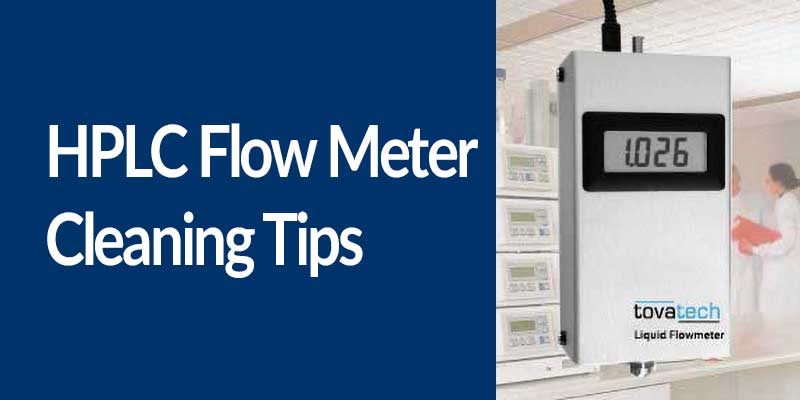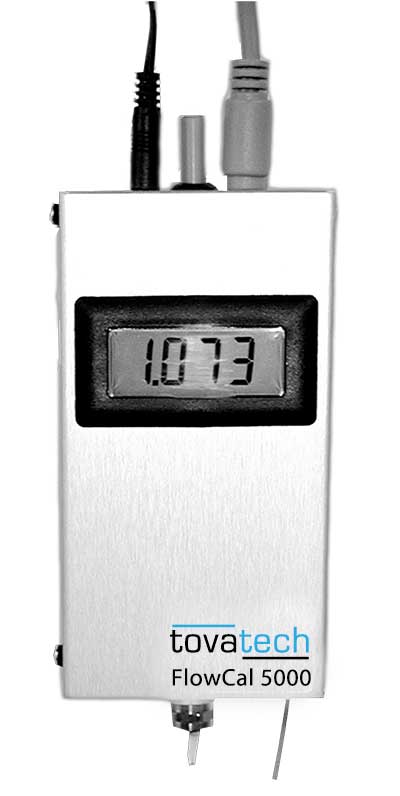
HPLC Flow Meter Cleaning Tips
Digital high performance liquid chromatography (HPLC) flow meters measure the accuracy of HPLC pumping systems to meet FDA and other regulations for equipment used in the pharmaceutical, biopharmaceutical and other analytical labs. Maintaining digital HPLC flow meters is a part of good laboratory practices.
High Performance Liquid Chromatography Market Growth
According to a report by Verified Market Research, “The High Performance Liquid Chromatography Market size was valued at USD 5,335.31 Million in 2022 and is projected to reach USD 8,084.56 Million by 2030, growing at a CAGR of 5.57% from 2023 to 2030.”
The report states the HPLC market “is anticipated to develop throughout the forecasted period as a result of the increasing usage of liquid chromatography equipment in forensic science, life sciences, and the pharmaceutical industry.”
What Do Digital HPLC Flow Meters Do?
Skip this if you already know.
Digital flow meters for HPLC pump systems measure rates in fractions of milliliters per minute. This is in sharp contrast to the flow meters at your local gas station or on your propane or fuel oil delivery truck. Lots more detail on these precision instruments is presented in our post how a digital flow meter works.
What are HPLC Pump Systems?
Skip this if you already know.
HPLC pump systems are described in a Process Instrumentation article as “complex devices with multiple moving parts subject to leaks and wear.”
As to the importance of maintenance, the article continues complexity “impacts accuracy in terms of flow rates such as 0.05 to 25 milliliters (mL) per minute. Operators of these systems must exercise care to avoid or at least minimize wear on parts that can occur if particulates settle in valves and other moving components.”
Maintaining your Digital HPLC Flow Meters
This post focuses on the importance of HPLC flow meter cleaning, how to do it, and the role of flow meter cleaning in maintaining accuracy. We use as an example the FlowCal 5000 flow meter offered by Tovatech.
What to Avoid
A serious error is introducing in immediate succession two immiscible liquids into the digital HPLC flow meter. Either allow the first liquid to completely evaporate or introduce a third solvent in which the other two are miscible.
Do not store the HPLC flow meter for an extended time. Instead, a good HPLC flow meter cleaning practice is flushing the flow meter with ethanol if it is not to be used for a week or more. This prevents algae growth in the tube.
Dirty sensing tubes in a FlowCal 5000 HPLC flow meter may cause bubbles to become entrapped. This can create falsely high readings.
If bubbles are observed, a quick fix is to turn the unit off, wait approximately 2 seconds to allow it to drain, then switch it on. Contaminated tubes will also result in an “Error 4” reading denoting either the flow meter is not draining or the sensing tube is contaminated.
Recommended HPLC Flow Meter Cleaning Procedures
To maintain the accuracy of the FlowCal 5000 flow meter it is essential to keep the sensing flow tube clean. A cleaning kit is supplied for this vital function that does not entail disassembly of the sensing tube.
Be advised that disassembly will invalidate factory calibration.
Flow meters in constant use should be cleaned every two weeks in an operation that normally takes about 15 minutes.
Erratic readings are also a sign that cleaning is required.
Following manufacturers instructions disconnect tubing connected to the inlet pipe at the bottom of the vertically mounted flow meter, then power up the unit.
Then wrap a small tissue or clean cloth around the flow tube protruding from the top of the meter to prevent cleaning fluid from entering the flow meter via the nearby power and RS-232 sockets.
Check the cleaning brush to be sure it is clean and is free of loose bristles or fiber, then dip it into the cleaning fluid, insert it carefully into the flow tube and push it down until resistance is felt. Gently rotate the brush while moving it up and down in the tube, collecting any foam in the tissue.
After removing the brush, fill the supplied 20-ml syringe with clean warm water and connect the supplied blunt-ended Luer needle.
Connect the small bore tubing to the blunt end needle then carefully push the tubing 20 mm into the top of the flow tube and slowly inject the warm water.
Water will pass through the flow tube and out the overflow pipe at the bottom of the instrument. The FlowCal 5000 flow meter may report “Error 2” or “Error 4” and the valve may be heard to open and water drain through the drain outlet during operation. This is normal.
Refill the syringe with warm water and repeat this step.
The following step should be repeated two times (a total of three) to ensure all cleaning fluid has been flushed from the flow meter and that the sensor head has cooled to room temperature:
Fill the syringe with clean cold water and connect it to the inlet pipe at the bottom of the flow meter. Place your finger over the top of the flow tube at the top of the flow meter. Slowly inject the cold water. Water will flow through the flow tube and out the overflow and drain outlet at the bottom. Error readings and valve open and closure may occur and likewise can be ignored.
Clean up any spillage, re-connect the FlowCal 5000 flow meter to the pump and eluent, etc. Allow the eluent to flow for several minutes to flush out any water before taking readings.
User Experiences with Digital HPLC Flow Meters
A digital HPLC Flow Meter is a real time saver compared to manual methods, especially when multiple pumping systems must be checked on a regular basis. For real life experiences, check the testimonial comments following the Flow meter FAQs on our website.
Need More Info? Contact our scientists for more information on HPLC pump system calibration, HPLC flow meters and HPLC flow meter cleaning to help you appreciate the importance of HPLC flow meters.

